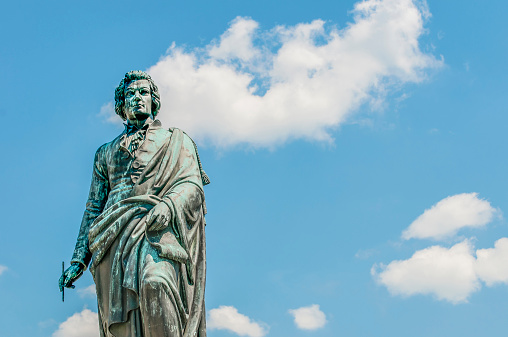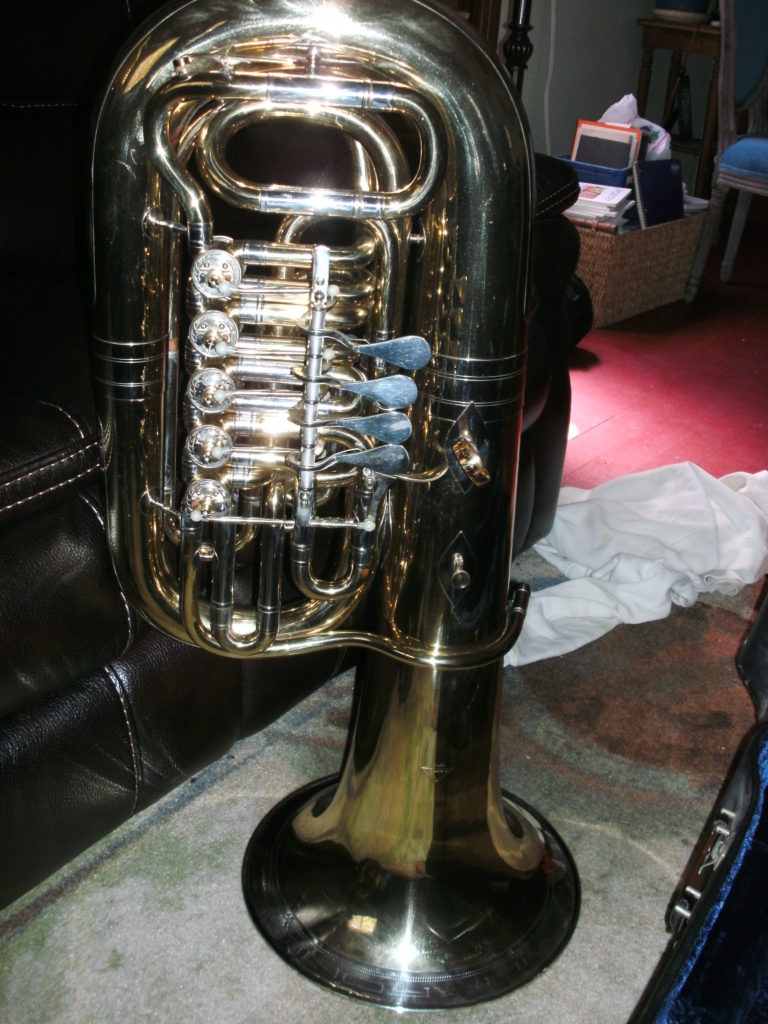“Art is our chief means of breaking bread with the dead.”–W.H. Auden
For Jo-Anne

In late autumn of 1972, when I was twenty-two-years-old, I visited Mozarts Geburtshaus (Mozart’s Birth House), in Salzburg, Austria. I was one of only a handful of pilgrims climbing the narrow stairs to the cramped, former living quarters. Looking into a display case containing some of Mozart’s personal effects, I became transfixed by a lock of the composer’s hair. I recalled a familiar passage from Michael Kelly’s Reminiscences: “[Mozart] was a remarkably small man, very thin and pale, with a profusion of fine fair hair, of which he was rather vain.” And there it was: a lock of that same “fine fair hair”—exactly as described by one of Mozart’s personal friends. I was in a dream-like state, until a tall, uniformed man, in his late-sixties or early-seventies, tapped my shoulder and motioned for me to follow him. I didn’t think I had done anything wrong—so I followed without complaint, and was led to a small, eighteenth-century clavichord. The curator’s stern face suddenly gave way to a benevolent smile, as he pulled back a plexiglass covering from the clavichord’s keyboard: granting me permission to play. A placard identified the instrument as the one used by Mozart while composing his opera The Magic Flute. I was a tubist; not a pianist. But thanks to a former college piano proficiency class, I was able to plunk out the opening measures from Mozart’s Piano Sonata No. 11. My fingers were touching the very keys Mozart touched.
It’s not my intention to present the above memory as a travel-log boast—or a “Bucket List” notch (the Bucket List craze was not around in 1972; and at my current stage of life, I consider that practice an empty pursuit, and more than a little macabre). Mozart was—and remains to this day—my absolute favorite composer. My experience in Salzburg freed the composer from his plaster-of-Paris bust and helped me to see him as a fellow human being, with whom I could have shared bread and wine and enjoyable conversation. And for reasons I can’t explain, my newfound “long-distance” friendship enhanced my awe of the inscrutable genius of this “remarkably small” man’s remarkably profound music.
Around 1980, my professional music career was cut short by a non-life-threatening condition called “Embouchure Dystonia.”A few years later, I was able to lose my self-pity,and turn my creative energies to writing short stories. Good friend that he is, Mozart stuck around; and his music has continued to be a balm for my soul, and an influence on my writing. Which brings me to the Mozartean.
For most of my years writing short stories, I have considered the Mozarteana touchstone. My use of the term refers not to musicological analysis, but rather the emotional and spiritual elements Mozart’s music lends to deep expressions of the human condition. The fact is, I’ma bit rusty on my music theory. And even if I were able to outline an analysis of, say, the finale movement of the “Jupiter Symphony,” it wouldn’t explain the workings of Mozart’s imagination. Genius and the imagination cannot be deconstructed,distilled, or tacked upon a Periodic Table. The best we can do is attempt informed and thoughtful descriptions of the mystery.
In 1956 (the bi-centennial of Mozart’s birth),theologian Karl Barth wrote: “What occurs in Mozart is rather a glorious upsetting of balance, a turning in which the light rises and the shadows fall, though without disappearing . . .”That same year Frank O’Connor (a patron saint of the Mozartean short story) describes the Mozartean way of seeing things as “half way between
tragedy and comedy, [representing] a human norm.”
Cross-pollination in the arts is nothing new. Ernest Hemingway, on more than one occasion, said that he wanted to write the way Cézanne painted. In a 1958 interview for the Paris Review, Hemingway was asked to name his “literary forebears.” He responded with a long list of great writers, painters, and two composers: Bach and Mozart. He said: “I should think what one learns from composers and from the study of harmony and counterpoint would be obvious.”
The actual study of harmony and counterpoint would be a stretch for most people these days (or even in 1958). There are, of course, less severe approaches for the layperson. One approach would be to find Leonard Bernstein’s Young Person’s Concerts on YouTube. These incredible concert/lectures were broadcast on CBS (network television!), from 1958 to 1972.
A certain amount of spadework is necessary for all levels of art appreciation. We become better readers if we are able to see, hear and explain the differences between free verse and a Shakespearian sonnet. We become better listeners if we are able to hear and explain the differences between a Gregorian Chant and a Bach Cantata. Great art does not reveal its deepest treasures to a passive audience. It won’t happen by osmosis or pharmaceuticals.
But at the risk of sounding contradictory, I think it would be perfectly reasonable to begin the Mozartean quest simply by listening to some of Mozart’s compositions. I highly recommend beginning with two very short pieces: The Clarinet Concerto, and Ave Verum Corpus. Both of these pieces were written in the last year of Mozart’s short life; and both are exemplary of music in which the light rises and the shadows fall, though without disappearing.
 I had played the mandolin since age seven, but when I entered high school, in 1964, I chose the tuba as the instrument I would play in the concert band. At the time I had little knowledge of the dented brass contraption in the corner of the band room, but it seemed to beckon me: like the Sword in the Stone. As it turned out, I had a natural talent for the tuba. The first notes I produced were stable and centered, and in less than five minutes instruction, I was playing a B-flat major scale. Four years later, I enrolled in junior college as a music major (I had been offered a one-hundred dollar “scholarship”). The junior college music department had no tuba instructor, however, so I set out on my own to find a private teacher, and in 1969 I contacted Roger Bobo—one of the greatest musicians ever to hoist that magnificent horn. He was then the tubist in the Los Angeles Philharmonic. He had also been the first tubist to give a solo recital at Carnegie Hall (see John Updike’s light verse poem: “Recital”).
I had played the mandolin since age seven, but when I entered high school, in 1964, I chose the tuba as the instrument I would play in the concert band. At the time I had little knowledge of the dented brass contraption in the corner of the band room, but it seemed to beckon me: like the Sword in the Stone. As it turned out, I had a natural talent for the tuba. The first notes I produced were stable and centered, and in less than five minutes instruction, I was playing a B-flat major scale. Four years later, I enrolled in junior college as a music major (I had been offered a one-hundred dollar “scholarship”). The junior college music department had no tuba instructor, however, so I set out on my own to find a private teacher, and in 1969 I contacted Roger Bobo—one of the greatest musicians ever to hoist that magnificent horn. He was then the tubist in the Los Angeles Philharmonic. He had also been the first tubist to give a solo recital at Carnegie Hall (see John Updike’s light verse poem: “Recital”).